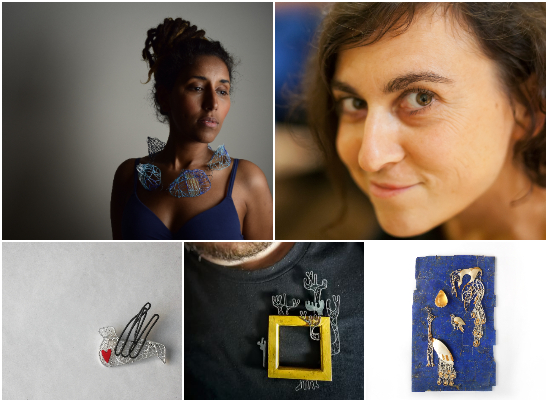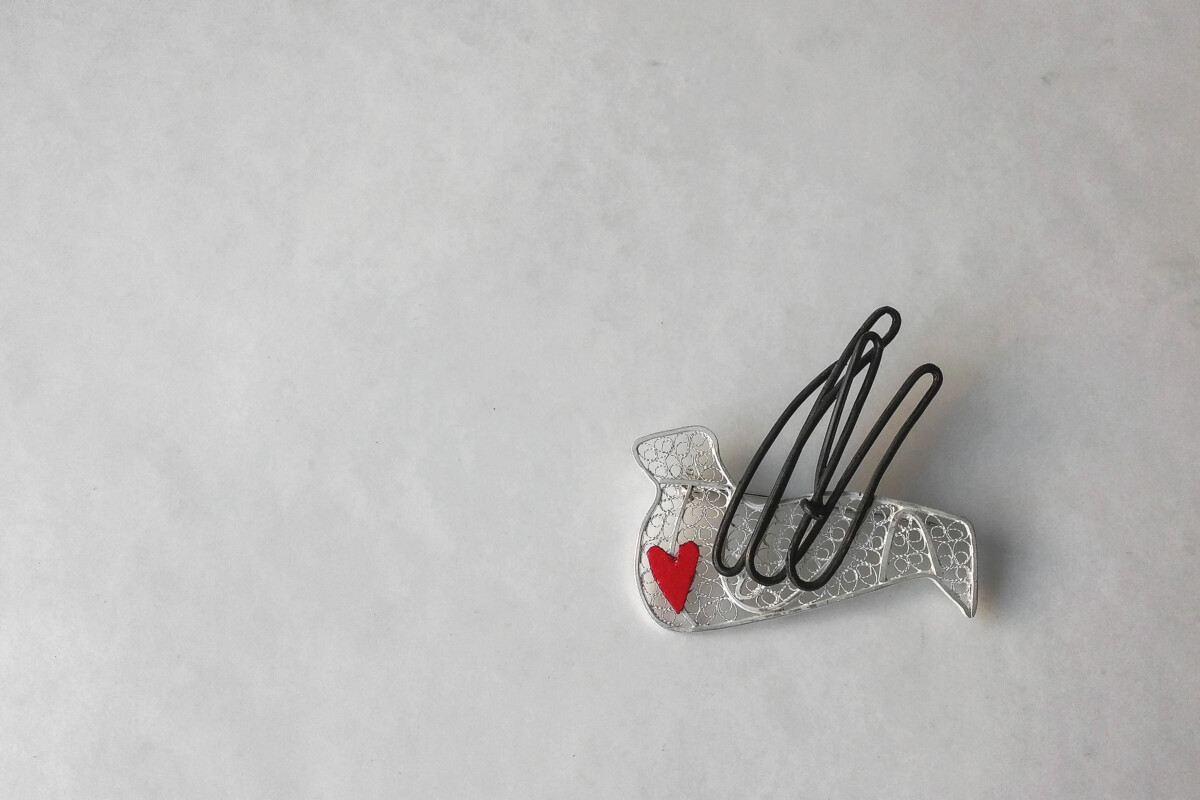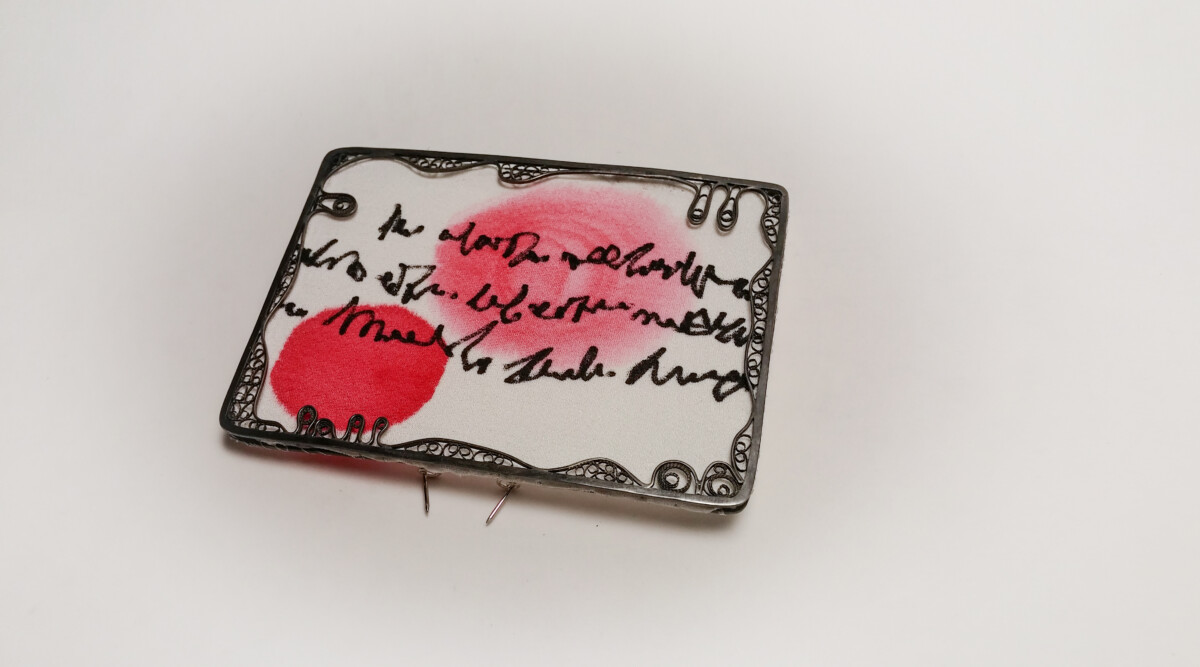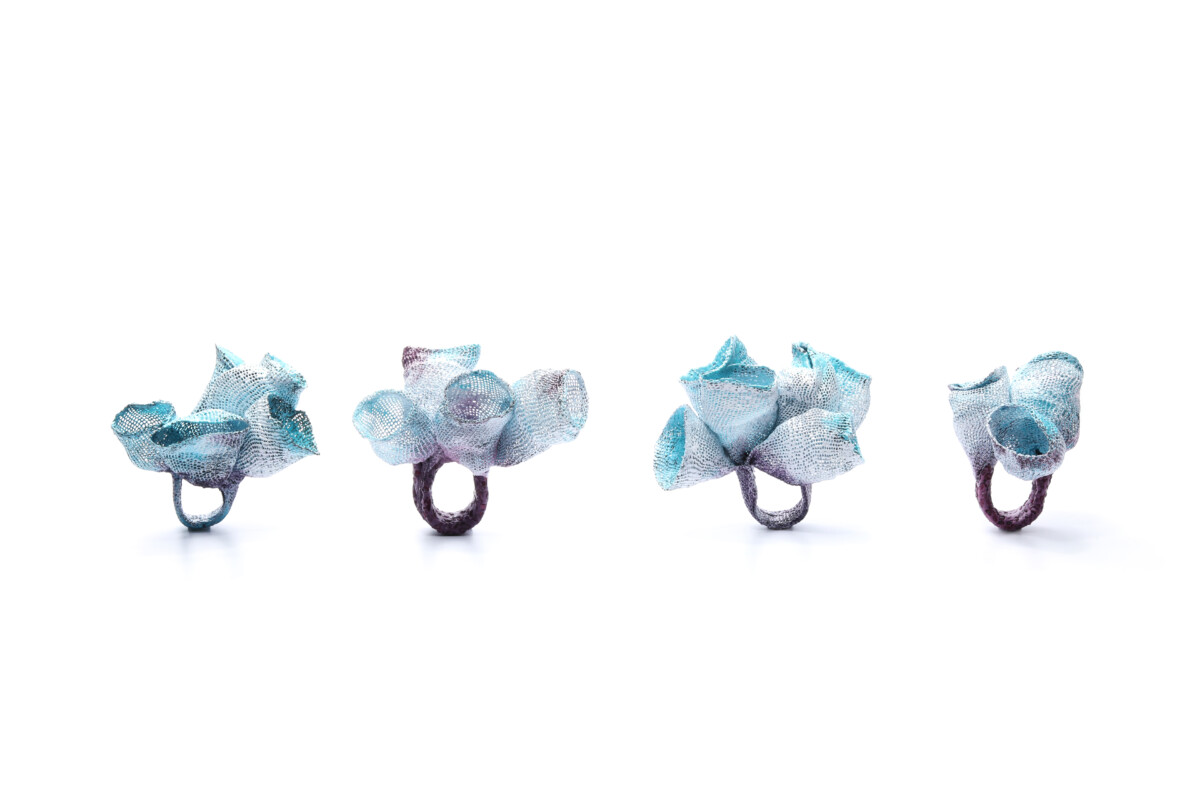Interview with Biljana Klekackoska, resurrection of filigree: What makes a caveman from 75.000 years ago adorn himself?

My challenge is to always play, to re-examine, to discover new faces or, say, new facets of a gem.
Biljana, in addition to being a resurrection of filigree and protector of cultural heritage, is a thirsty erudite who with an established name deepened her knowledge at the renowned faculty "Trier". A look at her work will reveal an infinite world, almost magical, distant and subconscious, which most lovingly, with caring fire nurtures the human need for "adornment".
When did you start filigree? How did your interest in this form of craft come about?
- This is a very old story, told many times and in many places. I started working with silver in 1997, at the same time the filigree story started. Filigree attracted me as an important part of our intangible and tangible cultural heritage, which was on the verge of extinction at the time. When I say immaterial, I mean the craft as a centuries-old accumulated skill to process precious material (gold, silver), to think, to give shape and to make an object for adornment; jewelry in which some meaning is woven. And why jewelry - is a question to which I regularly find new answers throughout these 25 years of creative creation.

Jewelry not only as a status symbol or object of intimate meaning, but also as one of the oldest cultural benefits of mankind. Jewelry as an essential form of expression and non-verbal communication, as an object with multiple layers of meanings and functions deeply related to the personal, identity, as the embodied form of our values. What is it that makes a caveman from 75.000 years ago, in addition to the tools and tools needed for survival, make holes in shells (technological progress in itself!), Arrange them on a string and put them around the neck. to be adorned?

Your career has many successes. What are your favorite pieces of jewelry that you have made and for whom?
- Maybe my favorite are those pieces of jewelry, including objects, through which I have made some breakthrough, in terms of overcoming a certain expression or already established way of creating. Whether it is an existing tradition or an achievement (within a certain technique, work materials). Each new climbing ladder has the potential to enchant, to open, but at the same time to turn into a constraint, given the comfort and security that repetition offers or the constructed expectations of others. My challenge is to always play, to re-examine, to discover new faces or, say, new facets of a gem.
View this post on Instagram
At the moment, my closest pieces of jewelry are the practical part of my master's thesis entitled "A Glimpse of the Invisible". I would also like to include the wall object I made entitled "Three birds gathered around a drop of liquid light on a leaf of lapis lazuli", which our esteemed President Stevo Pendarovski gave to Pope Francis during a visit to honor the all-Slavic educators, the holy brothers Cyril and Methodius in 2021.

You are already an established filigree artist. Why did you decide to enroll at the Trier School of Art in Germany? What have you just learned at this stage in your career?
- Hmm. Probably for the same reasons. A challenge to cross another boundary. On the one hand, I wanted experience in a reputable institution, given that all my development and achievements in the field of jewelry were non-institutional. On the other hand, because I was more and more attracted to original jewelry, more precisely jewelry as an art form, I needed a different environment and focus, a different platform and networking that this school provided me with.

You have a master's degree from Trier, a department of jewelry and precious stones in Idar Oberstein. What does this mean for your handicrafts and the way they are made? Do you work with other materials and techniques?
- Master studies are part of the University of Trier, Department of Jewelry and Precious Stones in Idar Oberstein. This is a small department, in a small town, but both hide an abundance of valuables. The school offers a specific program and conditions for working with various materials: all kinds of metals, stone, ceramics, glass, enamel, plastic, biomaterials, 3D design and 3D printing, literal freedom of choice that individually suits each student, depending from personal projects and topics. This freedom was crucial for me, given that I come from an independent cultural scene and professional development. I got the opportunity to experiment a lot, at the same time to practice new techniques and materials that were not available to me in Macedonia. I played with machines and tools and materials, I fell in love with various precious stones. The materialized results and fruits of my work here, I hope will have the opportunity to be exhibited and seen in Macedonia in the near future.
Where do you get inspiration for your works of art and how does the spiritual and manual process of their creation take place? Where can your creations be found?
- In a way, the work process in these 2 and a half years has started a transformation that is still ongoing. The former design of a collection and making from an idea, a sketch to a piece of jewelry, I allowed to disintegrate so that something new could sprout. I applied the same approach to filigree as a technique. For inspiration, my field of research here was two topics: connection - as a relation between the existent, and mycelium (the underground part of what we know as a mushroom) as an archetype of connection. At the same time, the human-mushroom relationship and its history was also part of my research. Around the exhibition, this year there are several presentations at important fairs for author / art jewelry. In April, as part of a graduation group, I introduced myself to Inhorgentha in Munich, followed by Schmuk in July, again in Munich - one of the most important events in the world when it comes to jewelry as an art form. An exhibition in Zagreb and several smaller fairs in the fall are also planned. Of course, I am also available on the social networks "Instagram" and "Facebook".



